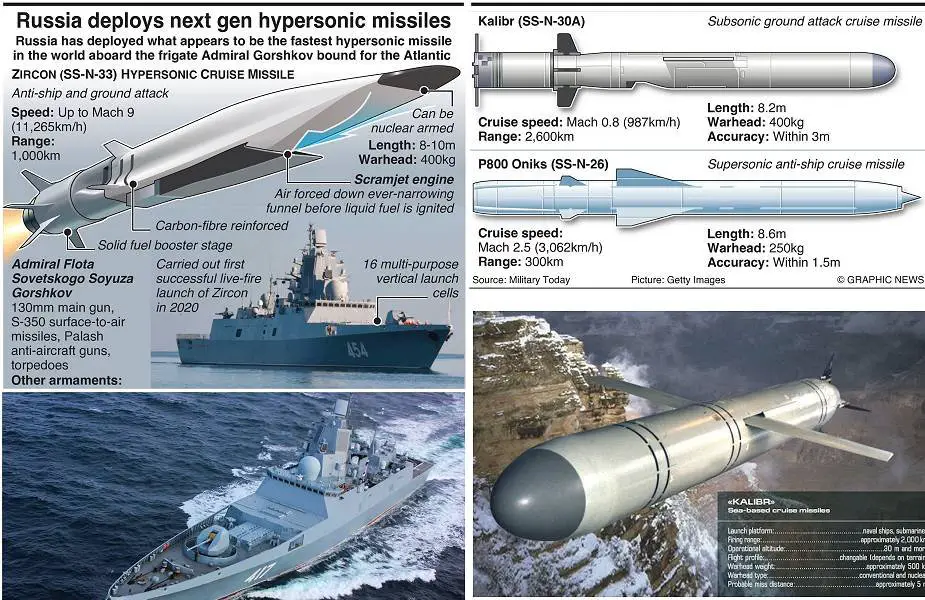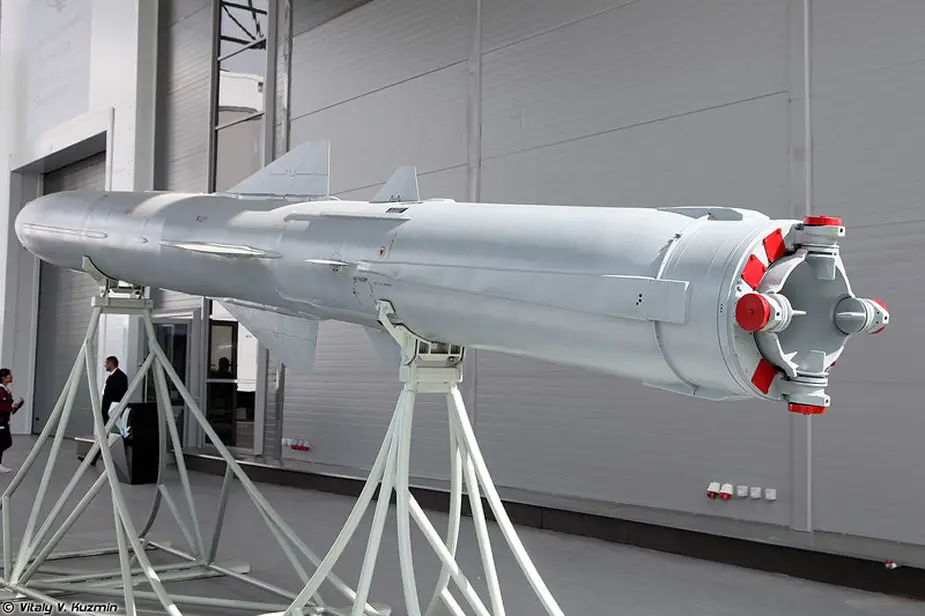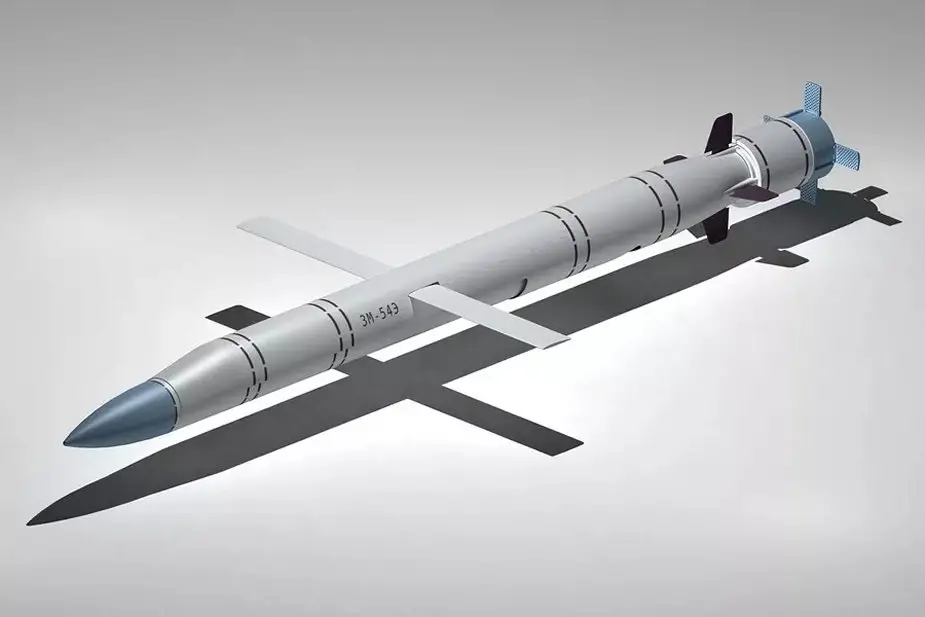Russian Navy's frigate Admiral Gorshkov recently left Russia for a long deployment, in the Channel, in the Atlantic, and to America. She has been armed with the Tsirkon hypersonic missile that could be a new threat to Ukraine.
Follow Navy Recognition on Google News at this link
 Artist rendering of the Tsirkon, the Onyx, the Kalibr, and the frigate Admiral Gorshkov. (Picture source: Graphic News)
Artist rendering of the Tsirkon, the Onyx, the Kalibr, and the frigate Admiral Gorshkov. (Picture source: Graphic News)
On 4 January 2023, Admiral Gorshkov re-entered service equipped with Tsirkon hypersonic missiles and began a voyage that will pass through the Atlantic and Indian Oceans, as well as the Mediterranean Sea. She is an Admiral Gorshkov class frigate of the Russian Navy and the lead ship of the class.
She was designed by the Severnoye Design Bureau and was built by the Severnaya Verf shipyard in St. Petersburg. The frigate has a displacement of around 4,500 tons and is equipped with advanced weapons systems such as the A-192M 130 mm naval gun. It also has an advanced radar system, the MR-231, and the Poliment-Redut air defense system.
The frigate is powered by a combined gas turbine and gas turbine (COGAG) propulsion system and can reach speeds of up to 30 knots. It has a crew of around 200 and is equipped with a helicopter deck and a hangar, allowing it to operate helicopters such as the Ka-27.
Tsirkon hypersonic missile
Tsirkon, also known as Zircon, is a hypersonic cruise missile that was first revealed by Russian President Vladimir Putin in 2018. The missile is believed to have been in development since the early 2000s.
It is designed to fly at extremely high speeds, up to Mach 9, which is nearly 7,000 mph, and at a low altitude to evade radar detection. The missile has a range of about 1,000 km, making it capable of hitting targets deep inside enemy territory.
Tsirkon can be launched from a variety of platforms, including submarines, ships, and ground-based launchers. It is also believed to be capable of carrying both nuclear and conventional warheads.
In tests, the missile has been reported to have successfully hit targets at sea and on land. Russia claims that the missile is currently in service with the Russian military.
Tsirkon is a hypersonic cruise missile that is believed to be powered by a scramjet engine, which allows it to reach speeds of up to Mach 9. Scramjet engines work by taking in air at supersonic speeds, compressing it, and then combusting it with fuel to generate thrust. This allows the missile to fly at extremely high speeds without the need for a traditional turbine engine.
The missile is also believed to be guided by a combination of inertial navigation and GPS. It is designed to fly at a low altitude to evade radar detection and uses advanced stealth technology to reduce its radar cross-section.
Tsirkon has a range of around 1,000 km and it is reported to be capable of carrying both nuclear and conventional warheads. The missile is also capable of performing evasive maneuvers during flight, making it difficult to intercept.
In addition to the Tsirkon, the Russian Navy has the Onyx supersonic cruise missile and the Kalibr anti-ship missile.
 P-800 Oniks supersonic missile. (Picture source: VK)
P-800 Oniks supersonic missile. (Picture source: VK)
Onyx
The Onyx missile, also known as 3M55 and SS-N-26, is a Russian anti-ship cruise missile developed by the Novator Design Bureau. It is a supersonic missile that is designed to be launched from submarines, surface ships and coastal defense systems. The missile has a range of approximately 600km and is capable of reaching speeds of up to Mach 2.5.
The missile is guided by an inertial navigation system (INS) and a radar altimeter for the terminal phase of its flight. It has a passive radar seeker that allows it to evade radar and other defensive systems.
The missile carries a high-explosive fragmentation warhead with a variable yield and is designed to destroy large surface ships, including aircraft carriers.
 Artist rendering of the Kalibr cruise missile. (Picture source: rus.team)
Artist rendering of the Kalibr cruise missile. (Picture source: rus.team)
Kalibr
The anti-ship variant of the Kalibr missile, also known as the 3M54 or SS-N-27, is a Russian cruise missile designed to target ships and other naval vessels.
It is a supersonic missile that can travel at speeds of up to Mach 2.5 and has a range of over 300 km. It is launched from submarines, ships and coastal defense systems.
The missile is equipped with a passive radar seeker, allowing it to evade radar and other defensive systems. It carries a high-explosive fragmentation warhead and is designed to destroy large surface ships, including aircraft carriers.
The missile uses inertial navigation system and radar altimeter for guidance, and is capable of performing evasive maneuvers and flying at low altitudes to evade air defenses.



